The Hijacking of France (from Donald Trump to Marine Le Pen)
April 4th, 2017 by Dimitris Konstantakopoulos
“I am the last President of France. All the next presidents will be accountants,” François Mitterrand once said.
But he would not have been able to imagine the unexpected, tortuous routes that History, or those in need of accountants, would have chosen to approach their goal.
Perhaps not even a Machiavelli could have imagined them. It would have taken the perverse genius of a Joseph Fouché.
The unthinkable, which they have been preparing for so long, may now be about to happen. Foreshadowing, like so much else that is now occurring, an era of major global shocks…

In France, the country of Voltaire and Robespierre, of the French Revolution and the Commune, of Charles De Gaulle and Jean-Paul Sartre, in France, the daughter of the Renaissance and the Enlightenment, the mother of modern Europe and its culture, or whatever remains of it, Marine Le Pen, today’s – admittedly mutated but nevertheless authentic – descendant of a political current with its origins in the disgrace for France that was the regime of Vichy.
But the founder of the National Front, Jean-Marie Le Pen, is not laughing as he sees the movement he himself created coming so close to power. Nor even that his own offspring, for whom he paved the way, could be about to become the President of the Fifth Republic.
Jean-Marie Le Pen is weeping bitter tears.
An abyss separates the present writer’s ideas from his. But in the day that is dawning it is not only the distinctions of Left and Right, of Communist and Fascist, of atheist and believer, of Christian and Muslim, that are significant. It is also of great importance whether an individual belongs to those who have some kind of identity, ideology, religion, ethics or those who have none: the homines oeconomici, the creatures of putty, the contemporary Fausts who would sell their soul if they had one.
It is in the unusual, the rare, that the information is to be found, was the belief of Shannon, inventor of the homonymous theory. What is it that Jean-Marie knows or understands that we possibly do not?
Pourquoi Pas?
The National Front has its origins, totally or partially, in the Vichy regime. This, for Marine, is one of the facts she cannot get away from, however hard her “strategist” Philippot tries to sever every link with the Front’s past, whether it be Vichy, the torture of militants, in the attempt to keep Algeria as a French colony, something that cost hundreds of thousands of Algerian lives and brought their country to ruin.
The Ancient Greeks taught us the meaning of Truth (Alitheia) through the way they constructed the term to describe it, which in Greek means No Lethe, no oblivion. Important things are not to be forgotten…
The Vichy regime was imposed by the Nazi boot and was made possible by the vote of the majority of the elected members of the National Assembly, in the casino of this spa town, in 1940, long before we arrive at today’s “casino-economy” and “casino-politics”.
“No, this is a coup”, said General de Gaulle and he fought it, along with his Free French. He fought it, along with the maquis, with Greeks, Serbs, Britons, the fighters of Moscow, of Leningrad, of Stalingrad until, having paid a terrible price, the Soviets and their Red Army raised their flag over the Reichstag.
 At that time France retained the memory of the decapitation of its kings. De Gaulle put on trial the leaders of Vichy, the World War I hero Marshal Petain and his prime minister Laval, whom the judges in their turn sent to the firing squad. They executed Laval to enable France and its Republic to live. France won the right to sit at the table of the victors of the Second World War and to become one of the permanent members of the United Nations Security Council.
At that time France retained the memory of the decapitation of its kings. De Gaulle put on trial the leaders of Vichy, the World War I hero Marshal Petain and his prime minister Laval, whom the judges in their turn sent to the firing squad. They executed Laval to enable France and its Republic to live. France won the right to sit at the table of the victors of the Second World War and to become one of the permanent members of the United Nations Security Council.
Now, in a way, Vichy has made its comeback. Not praising itself, not defending itself, half-condemning itself, depositing wreaths at the grave of de Gaulle, even trying, more or less ostentatiously, to claim the legacy of Napoleon himself. This is particularly true of Marion Lepen, the family’s youngest and very beautiful political star.
How is it possible that History (or its would-be proprietors) could have made possible such an amazing turnabout?
The suicide of the Socialists and of the Gaullists.
Much water has flowed in the Seine to get us where we are now. The three major post-war political families of France, the Right, the Communists and the Socialists (not to put on the list the Trotskyists also, who never became a large organized political force but nevertheless played a very important role) gradually, through the choices they made, cancelled out key elements of their own identity and raison d’être.
I remember, as a young student in France in the 1980s, seeing Jean-Marie bantering on television, accusing everybody of stealing his ideas: socialists taking Atlanticism, the Right-wing liberalism, Communists his immigration policy (a Communist mayor had just sent in bulldozers to demolish immigrant shacks).
He was not entirely wrong, though the most he was really able to do was to highlight their contradictions. The reason they were appropriating some of Le Pen’s ideas was that they were increasingly retreating under the pressure of capital (and the Americans). For decades, both Socialists and the Right did just what they were asked to do. By the end of this process, politicians had been transformed into employees. They had lost their usefulness, both for those who voted for them and those who utilized them.
Liberalism and Atlanticism
Mitterrand’s leftist experiment with the economy lasted a year before the Socialists changed their course entirely and began to implement in exemplary fashion the most orthodox liberal management of the French economy, exactly what “the markets” wanted.
The Socialists pursued pro-American policies, in contrast to Gaullists, and very typical for European social democracy. It was not until he felt his own end approaching that François Mitterand confessed “we are at war with America, but the French do not know this.’’ They do not know because no-one has told them.
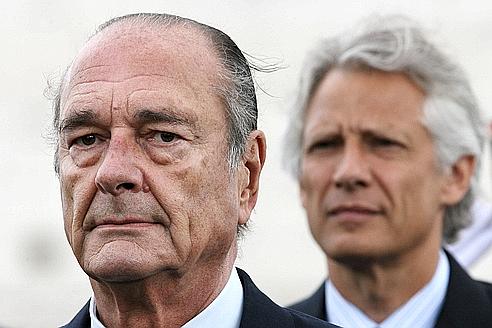
Up to the time of Jacques Chirac and Dominique de Villepin, who took sides with Schroeder and Putin against the war in Iraq, Gaullism retained at least some of its independent reflexes. In 2003 Chirac’s Prime Minister Villepin became the mouthpiece of all the civilized world, denouncing before the Security Council like a latter-day Demosthenes the proposed US-British invasion of Iraq.
But not long after this they appeared to have taken fright at their own courage, perhaps subjected to huge pressures and blackmail, which they lacked the courage of a De Gaulle to resist. They hastened to bury, with even greater alacrity than the way they had announced it, every plan of truly independent European defence. For the rest of his term Chirac dispatched a special envoy to Washington, every week, to avoid any new “misunderstanding”.
Shortly before the end of his term, deeply disillusioned by Sarkozy winning the race to succeed him, he invited representatives of four international newspapers to his presidential Palace to warn of the terrible dangers of a war against Iran. They presented him as someone who had become unhinged.
As for Villepin, by the end of Chirac’s term in office he had already fallen. Not for what he had said in the Security Council but for failing to understand that Gaullism and neoliberalism are incompatible. He provoked a real social uprising in 2006 and was helped to fall through a collegial shove from behind by Sarkozy.
De Gaulle himself understood much earlier the contradiction between Capital and the Nation. Having defeated the revolution of May ’68, he tried to introduce profound changes in the administration of enterprises. The French bourgeoisie concluded that the General had lost his marbles, and overthrew him.
Now we have the lamentable Mr. Fillon, who launched his election campaign with announcements of layoffs, shooting himself in the legs.
From politicians to employees, from employees to actors (The global rise of Finance)
At this point, before proceeding with our examination of the French situation, we deem it useful to include some more general thoughts on international developments, above and beyond events in France. The hope is that this will help us to gain better understanding of what is happening in that country. Readers can choose to continue reading this section, or else skip it.
With the passage of time quantitative change became qualitative change. At first the political forces merely compromised with the powerful, that is to say with unbridled financial capital. By the end of the process they had become its employees.
Their very nature underwent alteration, imperceptibly, by virtue of their choices and the dramatic increase in the global power of financial capital, which went from being a strong component of the system to being the system itself!
Finance has now become a kind of superpower, without acquiring the conventional characteristics of states in the older sense. It has simply bought almost everybody, including political elites, “intellectuals”, media, both mainstream and alternative, information and cultural production, the discoveries of science and technology.
It does not send planes and missiles to impose its will. It sends “the markets”, and also sends the appropriate signals to friends and rivals, to deceive them and set them on the course it wants them to take, in a world where economic power has become more important than military power, intellectual more important than economic. “How many divisions has the Vatican?” Stalin once asked sarcastically. The Vatican is still in its place whereas Stalin’s once so seemingly powerful state has disappeared.
Since the collapse of the USSR, Finance has had less need of states, even the USA. It subordinates them to its logic. It does not comply with theirs. Freed from any restrictions, having abolished the distinction between investment and savings banks, it finds now new ways to reproduce itself through the derivatives industry. Through debt it forces exponential increases in the demands it makes on people, societies and nations. In European integration it has found the instrument par excellence for institutionalization of its domination.
Finance acquires, because it is able to buy, unprecedented means for controlling humans, beginning from our DNA and moving up to our thoughts and feelings, which are produced by armies of researchers at major universities and research centres, every day, every month, every year, without any social control or regulation. This has been going on since World War II and its aftermath.
In 2011 one of the rating agencies warned the US government and the Congress that they would have their credit rating downgraded if a compromise were not found on the budget. The warning was also the clearest of indications of the correlation of forces between Finance and the strongest state on earth. The assets of the world’s ten largest financial institutions is approximately equal to the total sovereign debt of all nations.
The most stunning of the latest revelations by Assange is not the way in which we are being monitored in our homes. It is the ease with which these methods were channeled by the CIA to individuals. In Israel there are accusations that millionaires have tried to buy entire arrays of functions from Mossad, one of the best secret services in the world because it has a strong ideological core. In the end Finance will even be able to buy itself because almost everything and everyone can be bought. Turned into property they cease to perform the functions they once performed. Exactly the same as occurs with cancer cells.
It is noteworthy that the exponential increase in the indirect political and social role of Finance has become a source of great confusion (and misapprehension) in so far as our brains are accustomed to analyzing a world where they players are visible states and major powers. We are used to looking upon them, not the powers that may be using them, as the subjects of history.
At the time of the collapse of the USSR, a columnist with the Financial Times suggested that we should go from citizens’ democracy to the democracy of enterprises. Easier said than done. Finance is not legitimized as power is. It must mislead in order to be able to govern. Its power also must remain invisible so as not to be put at risk.
To the same extent that it is freeing itself from any restraint from state or society and losing its last productive functions, finance is turning into a kind of cancer, transforming neoliberalism into a slave economy and “disaster capitalism” (e.g. Greece), transforming the classic imperialism of conquest, control and containment into an imperialism for demolishing peoples and countries (the Arab/Muslim world), and capitalism into a variety of post-modern feudalism.
The program of cancer is death and death has not yet acquired the capacity to be a political program. In order to achieve its aims, a policy of death must hide them. It must, as happens with autoimmune diseases, turn the same cells of the organism that are responsible for its defence against the organism itself. Because we want to live and because we know we are going to die, we need hope and meaning. So, deception, inversion of truth and reality, the use of identities against their real meaning (e.g. socialists destroying societies, nationalists destroying nations) tend to become the dominant political practices and methods. At least until or unless we get to the point described by Kafka in The Trial where we seek our own death as salvation…
This is why in our world we usually have to invert the words of a politician to discover what he is really trying to achieve. As we do with the impressions that the mainstream and alternative media and the public opinion pollsters are seeking to create.
In this new world information is not what is said. It is what is not said. It is expressed not in the visible, in the Presence, but in the unseen, in the Absence.
 Perhaps it is because it is some time since Mr. Barroso submitted to the test of an election, perhaps it was merely from stupidity, that he allowed himself to say: “We all know that the next generations will live worse lives than the present generation.” It is not possible to win elections saying such things.
Perhaps it is because it is some time since Mr. Barroso submitted to the test of an election, perhaps it was merely from stupidity, that he allowed himself to say: “We all know that the next generations will live worse lives than the present generation.” It is not possible to win elections saying such things.
Neoconservatives invoke the realism of Hobbes to justify the wars they started in the Middle East. But in fact they are trying to use the philosopher’s “realism” to disown his own objectives. It is not the naivety in the Kantian vision of Perpetual Peace that bothers them but the vision of peace itself. As for Soros, History will deny him the title of philosopher, not because he lacks the intellectual capacity of his teacher Karl Popper but because his financial practices belie the motivations underlying the work of the Open Society’s prophet.
What all of them try to hide behind their analyses is the real moral choice behind their actions and their ideas. They prefer greed to generosity and the god of War to the god of Love. It is as simple as that. They present their choice as the only realistic one. In fact they are writing a requiem for humans and for life in general.
Clashes between civilizations were prophesized (or prepared) by Huntington, and even conflicts between Hispanics and “whites” in the US, long before Trump announced the plan for his wall. Democracy has no future, said Huntington, because of the physical limits to growth. Of course he was not able to come up with anything better than the spectacular explosion of inequalities and the virtual reintroduction of slavery, the transformation of human beings into nomadic animals like the refugees from Afghanistan, Syria, Africa (or the refugee scientists from southern Europe who leave their countries by air) to solve the problem. The Exxon of Mr. Tillerson, who dreams of melting the Arctic ice, striking a perhaps fatal blow to life, is symbolic of the logic to be found behind the chaos. They would like to induce us to come of our own accord to them, the people that have caused the problem, and ask them to establish a dictatorship, so gaining ourselves a temporary reprieve and saving our skins, albeit as slaves.
Three clarifying examples (Perestroika, Middle East, Greece)
The collapse of the USSR provides us with an example of great importance for understanding how these new forces are acting. There were of course very serious problems affecting this state; otherwise it would not have collapsed. Still, this was a necessary, not sufficient, condition. The USSR was not defeated by foreign with intervention in 1919 and 1941, or by the military pressure of NATO. It did not collapse because of a revolution. It collapsed through the actions of its own leadership, who committed a kind of (guided) suicide.
The USSR did not collapse beneath the “hard power” of foreign armies, nor even the “soft” power of advanced capitalism, but rather the “smart power” of its rivals.
It happened because the Soviet reformers had been persuaded that their enemies had become friends, and they entrusted them with the production of much of their own reform agenda, an action which by itself transformed the USSR into an object. The ideology of perestroika was developed at Michigan State University. The best informed analysts attribute the architecture of glasnost to George Soros. The West seems to have cooperated with a faction of the Soviet leadership to send Matthias Rust to land unhindered in Red Square, thus offering Gorbachev the perfect pretext to decapitate his own army (as Stalin did in the ‘30s with the help of German Nazi secret services). In the end, the Soviet regime became the first in history to be brought down by its own television, having lost its desire to survive.
President Bush in autumn 1991 even said, commenting on events in Ukraine, that he rather favoured maintaining the USSR, so as not to interfere in the slightest with the process of Soviet suicide. He probably knew by that time that he would be receiving a phone call some weeks later from Boris Yeltsin announcing that the Russian president had taken the initiative to dissolve the Union.
Ten years after Huntington a series of wars began in the Middle East. The United States is accused of starting them but it is doubtful to say the least that these wars were really in the national interest of the USA. The strategic decision to launch them was not taken by the American state. It was taken by the forces that created a range of neocon lobbies and took control of the American state, in the process even bypassing what had been that state’s established mode of functioning.
It is not difficult to discern the influence also of the “Empire of Finance” in the strategic decisions taken by both the German and the Greek governments after 2010, shaping not only the way the EU has responded to the financial crisis of 2009-10 but also determining the very future of the European project. One of the architects of the Euro, Otmar Issing, is the main German authority on monetary policy. In the spring of 2010 he was also one of the fiercest protagonists of the line “Not one euro to the Greeks”, as he wrote in Financial Times Deutschland (10.3.2010). What he omitted to say in his article is that he was also a paid advisor to Goldman Sachs Europe, the bank that contributed heavily to creating the Greek debt bubble in 2000-01 and then organized, in alliance with the German government, the attack by “the markets” against Greece, while being paid for its services by the government of the victim of the attack.
Is it a German project or a World Finance project that Mr. Schäuble has implemented against Greece, dealing a very serious blow to German political capital and the EU itself?
Perhaps it is time to heed the advice of Plato in his Republic and find the strength to see and face the real reality of our world.
From Sarkozy to Hollande
In every country taxi drivers are one of the best sources for a journalist trying to understand what is happening. In Paris in 2007 one of them told me,
“But Monsieur, is it serious? We voted “No” in the referendum (on the European constitutional treaty). Now, six candidates of “No” have presented themselves for the presidential elections, to ensure a “Yes” President will win”.
Sarkozy won finally. The rejected Treaty was ratified as the Treaty of Lisbon by the National Assembly, without any new referendum.
Before the election Sarkozy had laid wreaths at the grave of de Gaulle, perhaps fearing that the General would wake up and hunt him down. Once elected, Sarkozy got France back into NATO. He did what he could to destroy the last remnants of the social democratic historic compromise of the Communist and Gaullist resistance. He also reversed the entire Middle Eastern policy of France, spearheading the destruction of Libya, on behalf of those who had used the neocons to destroy Iraq.
Hollande won the next election, declaring that his real adversary is Finance (not even Robespierre had said such things). Once elected, he appointed Rothschild’s banker Macron to his ministry. His economic policy was tantamount to the suicide of the Socialist Party.
 Macron sent Hollande into retirement and is now the presidential candidate who, on current indications, barring surprises, will confront Le Pen.
Macron sent Hollande into retirement and is now the presidential candidate who, on current indications, barring surprises, will confront Le Pen.
Both Socialists and “Gaullists”, in the absence of any other credible alternative, opened wide the gate for Le Pen to become the chief expression of popular discontent, painting them with the colours of the French tricolor, channeling it into an amorphous opposition to the EU without any serious proposal for the future of Europe and with a slightly disguised but essentially pro-war preference for the Middle East.
Marine’s weapons
Marine won an important recruit: Florian Philippot. Formerly right-hand man to Jean-Pierre Chevènement, leader of the left wing of the Socialists and of the “souverainistes”, Philippot became Marine’s chief strategist, just as Steve Bannon became chief strategist to Donald Trump. Le Pen is said to take almost no decision without asking Philippot.
Philippot has put at the service of the French extreme right the weapons and the rhetorical flair of the French left, imitating its Cartesian methodology. He is no Jaurès, but he does not need to be in so far as he is playing without an opponent. Impressions overwhelmingly favour him when he is competing on television with the modified mutants of postpolitics who string together commonplaces and appear to have no more resistance to the extra-institutional factors than butter has to a knife.
Philippot has another achievement to his name. A homosexual himself, he has solemnly reconciled the enemies of “permissiveness” with the mighty “LGBT community”. The political strategy of Le Pen is masterly. She has managed to have a homosexual as her chief advisor at the same as the former communist fathers and grandfathers are pushing their children and grandchildren in the direction of the National Front so as to get away from, or wage war against, the “homosexuals” of the Left! So Madame Lepen now embodies macho, tough-minded politics, friendly acceptance of homosexuals and the image of being a dynamic woman. No mean feat!
Le Pen also managed, in spite of being the representative of France’s only notable anti-Semitic current, to become, like the vast majority of far right-wing movements in Europe, a good friend of both Jews and Israel. This is a phenomenon that requires serious analysis, not least from Jews themselves.
Needless to say, all this would be impossible if critical thinking had not long since been suppressed by various means, including control of universities, mass media, “intellectuals”, the main method being that of buying them off in one way or another. Of course formal freedom of speech still exists in France, but not the real possibility of any critical thinking, in the European country which par excellence, pioneered it and was proud of it. While war was raging in Algeria and de Gaulle’s advisors were urging him to apprehend the Communist philosopher Jean-Paul Sartre, supporter of the Algerian rebels (who were being tortured at that time by Marine Le Pen’s father) De Gaulle replied: “One does not arrest Voltaire”.
Of course imprisonment and censorship are part of an outdated methodology. The decision makers are confident today that through the noise of virtual news and analysis they can now drown out everything worth hearing.
During the Cold War Le Monde published the texts of Alexander Solzhenitsyn as a means of promoting anti-Soviet propaganda. Today, parodying itself, it publishes front page articles by oligarchs such as Khodorkovsky, to discredit Putin!
Marine’s tactical maneuvering provokes reactions within the National Front, which has its own purists. They have repeatedly gone to find her in order to protest. She listens to them and tries to reassure them: “we are doing this in order to win power, and then we will see how our ideas might be implemented”. The reassurance apparently fails to convince but the prospect of power and the amorphous character of the National Front – indeed of all modern parties now that one mentions it, which in many ways no longer resemble the political parties of the past – are enough to reduce the opposition to silence.
France is the country of Revolution. Through whitewashing its image, as much as possible, and expunging both her own personal past and that of the National Front, raising the banner of struggle against globalization, Madame Lepen has succeeded to a significant extent in harnessing the popular resentment that the Left has been unable or unwilling to express.
She has brought together two fundamental identities of France: the Nation and the Revolution. She has even been able to co-opt, through her own undeniable talent and the Leftist contributions of M. Philippot, the old and strong underlying currents of France’s socialist popular culture.
With her claim to represent the Nation, the Revolution and the People, Marine Le Pen is now entering the final straight.
The golden gift of the Banker to Mme Lepen
The armoury of weapons listed above may or may not be sufficient for the purpose. Who can tell?
There is another weapon, so far unmentioned, and that is her opponent.

Through his decision to stand for election, M. Emmanuel Macron, a Rothschild banker, provides the ultimate proof, if the French still need proof, that Lepen, as the opposite of Macron, is the candidate to support.
It is only against the hated symbol of the bank of the banks (and also of the EU and globalization) that Marine Le Pen stands some chance of prevailing.
And Macron too can win only against a Far Right candidate!
In all casinos, including the casino of Vichy, the casinos of Trump, the economy casino and the politics casino, there is a fundamental law. The casino wins in every game.
In the case of the French presidential elections, it seems that the French people are invited to choose between Globalization and the Nation.
But their real choice appears to be between two alternative models of financial domination of French state power.
If Le Pen wins, Capital will seek through her to replace the now prevalent model of domination with another one, or least modify the “globalist” model that is now dominant. If it fails to accomplish that, the extreme right will relegitimize the existing globalist model.
But the cards are marked and Le Pen can collude with the dealer. It is much easier for her to address France’s popular strata, whereas M. Macron’s constituency is confined to the politico-ideologically limited and socially depressed base of “bobos”, the bourgeois bohemian urban middle classes.
Nothing is left to chance. One day Fillon criticized the bankers gathering in Switzerland for decisions to the detriment of French and German banks and the next day went to Germany and said that the sanctions against Russia should be lifted, proposing what amounted to a political axis between France, Germany and Russia!
Immediately the Canard Enchaîné discovered problems between him and his wife. It was nothing to write home about, but it became a grand and terrible scandal from the way it was presented by the oligarchic pro-Macron media.
All things being equal, this will mean exclusion of Fillon in the first round, taking Macron into the second and conceivably ensuring Le Pen’s victory. In the second round a minority of Fillon voters will vote Macron in order to defeat Le Pen, but the temptation will be great to vote for Le Pen as punishment for the forces that excluded Fillon.
For over a year now the big French media have been helping Marine, without directly supporting her, which it would be naïve to do. They do it by framing discussion of the presidential elections as a discussion about who will be in best position to confront Le Pen in the second round. They thus appear to take it for granted that she will be among the winners of the first round. And by leading people to believe that she is more or less unacceptable to them, they encourage the French popular classes to believe she is their friend.
The possibility cannot of course be excluded that all the above represent the workings of chance. We have no proof that what is involved is implementation of a project…
But if it is indeed God that is behind this scenario, He is evidently keeping all options covered. He also seems to be less than a reliable friend to the bankers, who may have been foolish to stand one of their own against the radical Madame.
Huntington against Fukuyama
Could it be that Marine Le Pen is a reincarnation of Joan of Arc? In any case her slogans against globalization seem to be more or less of the same calibre as those of the outgoing president Hollande-Robespierre (or perhaps Hollande-Babeuf), against Finance. By the way, it was Fouché who promoted Babeuf in his campaign, and made use of it, before sending him to the guillotine.
 She is most probably the mask Finance believes it must wear, at least in the case of the most radical of its parties, which, perceiving that the survival of globalization is in no way guaranteed, have devised the medicine for the disease they themselves provoked. They resemble the industrialist who, seeing demand for his old products shrinking, decides to launch new ones.
She is most probably the mask Finance believes it must wear, at least in the case of the most radical of its parties, which, perceiving that the survival of globalization is in no way guaranteed, have devised the medicine for the disease they themselves provoked. They resemble the industrialist who, seeing demand for his old products shrinking, decides to launch new ones.
It is now quite possible that the French, thinking they must choose between Nation and Globalization, will choose one of two forms of domination of Finance.
One of these forms draws inspiration from the ideas of Fukuyama, the faded dream of benign globalization, the mixing together of nations in the cauldron of neoliberal politics and Ipad culture.
The other is inspired by the ideas of Huntington and the clash of civilizations. Not the merging of traditions but organization of the division and conflict between nations, using one against the other as in the old Roman custom of Divide et Impera, through violent demolition of entire countries and nations in continuous war and chaos…
The difference between the first and the second reflects differing assessments of the balance of power between the parties.
On the way to becoming an empire, Rome lost its own republic. The repercussions of its civil wars were felt all over the known world of that time.
The same is occurring today with the two wings struggling for predominance in the very centre of Imperial Power. That is the meaning of the ferocious struggles between Obama and Merkel for instance, on one side, and Netanyahu and Trump on the other. And who can know what is happening on the Olympus of finance, between the Rockefellers and the Rothschilds?
The Crisis of Globalisation
With their vote against the European Constitutional Treaty in the 2005 referendum, French citizens overthrew the ideological domination of “Euroliberalism” in their country, delegitimizing the Maastricht Europe, symbol of the new globalized world run by Finance.
The collapse of Lehman Brothers in 2008 exposed the economic impasse of neoliberalism, inaugurating the third similarly profound crisis in the history of capitalism, following those of 1860-70 and 1929. We are still very much within the environment of the 2008 crisis.
The crisis of 1860-70 led to the First World War and the October Revolution. The crisis of 1929 led to the reorganization of America by Roosevelt, to Hitler, to the Second World War, to the Chinese and anti-colonial revolutions. This is the scale and intensity of the events we can expect and which, in reality, have begun to unfold.
The European Left failed miserably to respond to the challenges of 2005 and 2008. It does not have a satisfactory plan for the reorganization of Europe, nor the determination to implement any such plan. It is conservative, not radical. It is permanently in error in the way it engages the question of the nation. It remains committed to the national framework in which its parties operate, incapable of constituting even a rudimentary European political subject.
US society tried with Sanders to give a first answer to the 2008 crisis, but it has not succeeded for the time being.
Nature abhors a vacuum. The solutions that societies cannot provide are now being proposed by a part of the Establishment itself, employing revolutionary slogans to implement domestic and international counter-revolutionary tasks. There is nothing original in the method. It was used by German National Socialists and Italian Fascists before the war, for all the important differences between them and contemporary far right radicals of the Le Pen or Trump type…
Why Le Pen and Bannon need Islam
A few days before the regional elections in France in 2015, ISIS with its Bataclan attack, performed Le Pen a great service.
“We must confront the new totalitarianism,” Le Pen proclaims. But do not imagine that the reference is to the banks. No, “totalitarianism” means the jihadists. The same is taking place in the USA. Prior to his election Trump was accusing Clinton of being in the service of Goldman Sachs and of starting, or wanting to start, wars. After his election what did he do? He appointed Goldman Sachs to rule the United States directly, without being obliged to enlist the services of its corrupt political class. Then he issued a decree banning the citizens of a number of Muslim states from entering the USA. Those states were not the states from which the terrorists originated. They were the states included in the list of states to be demolished, drawn up by the Neocons in 2000.
Listening to what many politicians and media say about Islam nowadays, one could get the impression of living at the time of the fall of Constantinople, the battle of Poitiers or the siege of Vienna. One could end up believing that it was not the West that flattened with missiles, bombers and mercenaries, around a dozen countries of the Arab and Muslim world. What is happening is that the Arabs are bombing Europe, and sending new Crusaders in the form of refugees, who drown, along with their children, apparently because they like taking risks, not because their homes are being bombed and destroyed.
Once again, it is masterly. The globalists propose, as a solution to the problem created by Western military policies and IMF world-wide practices, that we should welcome in our countries as many of the displaced populations as possible.
The adepts of Soros and Fukuyama who abet these scenarios are paving the way for Trump, Le Pen and Huntington, offering them the needed enemy, to be exploited both domestically and internationally.
They are preparing the ground for wars inside Western countries, a considerable proportion of whose population is of Muslim descent, and at the same time a new war or wars in the Middle East. They are using the situation not so much to fight against ISIS, which is first and foremost the creature of the secret services of the USA and its allies, but to curtail political rights and freedoms of the popular classes in the West, making it easier to attack their social gains and employing the Islamic threat to fuel its aggressive agenda in the Middle East.
Speaking three years ago to his “radical right” friends in the Vatican, Trump’s chief of staff Steve Bannon outlined with disarming clarity his international agenda of uniting Christians and Jews against “radical Islam” (**)
A fake friendship with Russia
Bannon also said some other very interesting things. A former employee of Goldman Sachs, he appeared to want to represent healthy against corrupted capitalism, in which Russia and China were also included, thus indirectly but cleared treated as enemies. Russia may not be first priority for the list of enemies, because Bannon’s own President at times styles himself a friend of Putin. Nevertheless, though a colleague of Milo Giannopoulos, Bannon does not seem opposed to the idea of an alliance with the Russians on the basis of “conservative values”.
Mr. Bannon also proved in another way, indirectly but very clearly, in the same speech, that he considers Russia to be an enemy. He presents the 2nd World War as primarily a victory of capitalism, which, as he says, helped the Soviets to survive, completely ignoring the fact that this victory was achieved by the sacrifice of more than twenty million Soviet people. In his description there were only Poles, Italians and Englishmen among the Europeans fighting Nazis. No mention is made of the two nations that put up by far the fiercest resistance to Hitler and Mussolini: the Greeks and the Serbs.
Bannon is courting ridicule when he claims that the 2nd World War, a war to a large extent between Nazi Germany and Communist Russia, was a war between Christians and atheists! But the reasons he has for courting the ridicule are not ridiculous.
Distorting the past, he also revealed the future he wants. The Middle East is important not only for what it is, or for its oil, but because it is a privileged space for the exercise of Imperial Power. The defeat of Arabs and Muslims sends a powerful signal to the whole planet, and in particular countries such as Russia, China and India, and even to Europe.
The future of Europe
Le Pen is not wrong in her many criticisms of the European Union and the Euro. The problem is not the criticism but the answers to the question of what might replace the existing European order.
It is already clear to a large percentage of the European population that the existing European Union is an unacceptable structure. What is not clear is what the possible alternatives might be. The fact that it is unacceptable and in urgent need of reform does not mean that by destroying it one will be left with a better and not a worse European order.
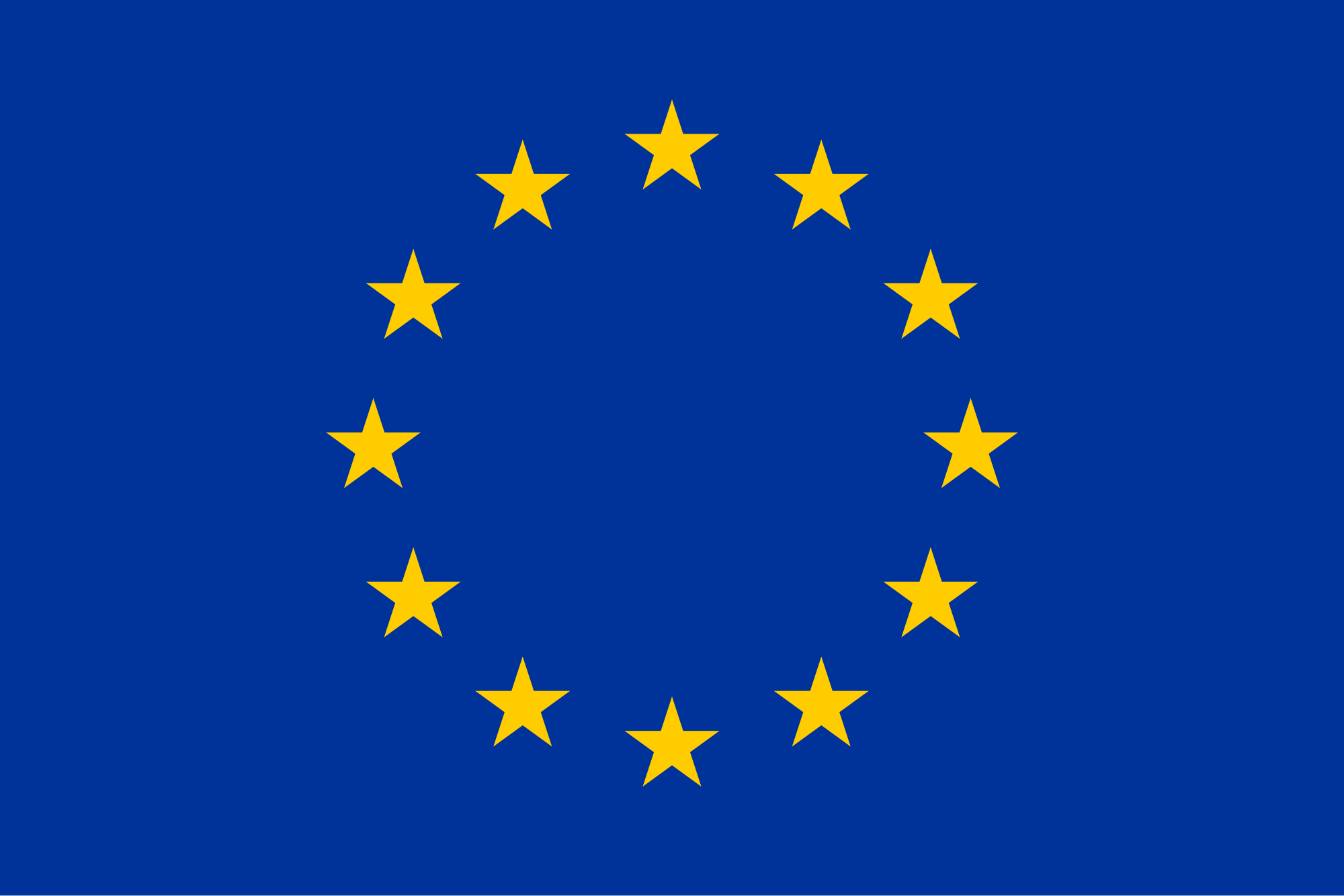
Is the dissolution of Europe into a galaxy of small and medium states, competing among themselves to acquire a part of a shrinking global demand, the best way to ameliorate the situation in the continent?
Is it a way to achieve national independence or a way to justify even bigger attacks against the social welfare state, or what it remains of it, in Europe?
Will European societies, states and nations be stronger or weaker as a result, as they face the colossal power that has been accumulated by international Finance? Will they be more or less dependent?
An important Russian intellectual and advisor to President Vladimir Putin, Sergey Glazyev, rightly explains that the two World Wars were in their way European civil wars.
The division of continental Europe has always been the prime weapon of outside forces that sought to dominate the continent by taking advantage of its contradictions. The aims of the British were to defeat France. The aims of the Americans were to subjugate the continent. They supported European integration only in so far as it sealed the division between the East and West of the continent and the domination of its western part by the USA.
Their absolute headache would have been the realization of De Gaulle’s dream of a Europe from the Atlantic to the Urals, or from Ireland to Vladivostok, if you prefer.
Only the creation of such a Europe can provide a basis for resisting the catastrophic ecological, socio-economic and geopolitical trends dominating our world.
This is the great responsibility of the forces that insist on being called leftist, social, ecological, or pacifist. Do they have a vision for Europe and the world? Do they have a strategy and the determination to face a challenge as great as the one that is objectively placed before mankind? Do they have the necessary independence and the courage to fight against the power of Finance? Or do they represent the light of a star that died, ushering in a long night in the history of mankind, a world that, in the glow of its technological achievements, nevertheless remains more prehistoric and barbaric than ever?
Will other alternative centres besides the West, usually conservative in their psychology but obliged to resist, be able to develop the radicalism that is required of them by such a radical objective situation? Will they be able to solve their own internal problems by proposing ideas of a more general nature for the solution of humanity’s problems?
We cannot answer this question for the time being.
Fake Radicalism
Both Trump and Le Pen are similar in many ways to pre-war totalitarian movements. But there are also significant differences…
In his poem about Greece and Europe, Günter Grass noticed that Hitler’s soldiers sent to occupy the Acropolis of Athens had the poems of Hölderlin in their haversacks.
Schäuble cannot be compared to Hitler, whatever the catastrophes both have inflicted on the Greek people. Nobody can imagine Hitler implementing the prescriptions of Goldman Sachs and Otmar Issing, while pretending to be a German nationalist.
When Noam Chomsky was asked in an interview whether Trump can be compared with Hitler, he answered that there is a big difference. Hitler and his companions really believed in their ideas, they did not just pretend to believe them.
Those who are using their enormous power and influence to create fake subjects risk discovering in the end that they cannot use them the way they might use real ones.
Dimitris Konstantakopoulos is a journalist and a writer.
Notes
(**) http://www.defenddemocracy.press/this-is-how-steve-bannon-sees-the-entire-world/



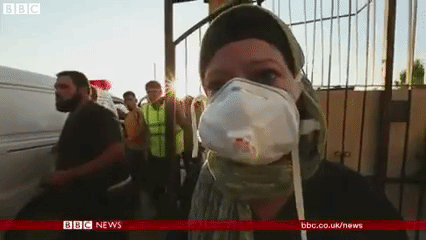



 Former finance minister of the Taliban regime Agha Jan Motasim
Former finance minister of the Taliban regime Agha Jan Motasim 

 The German online newspaper
The German online newspaper








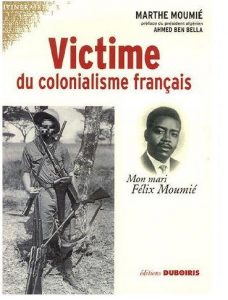
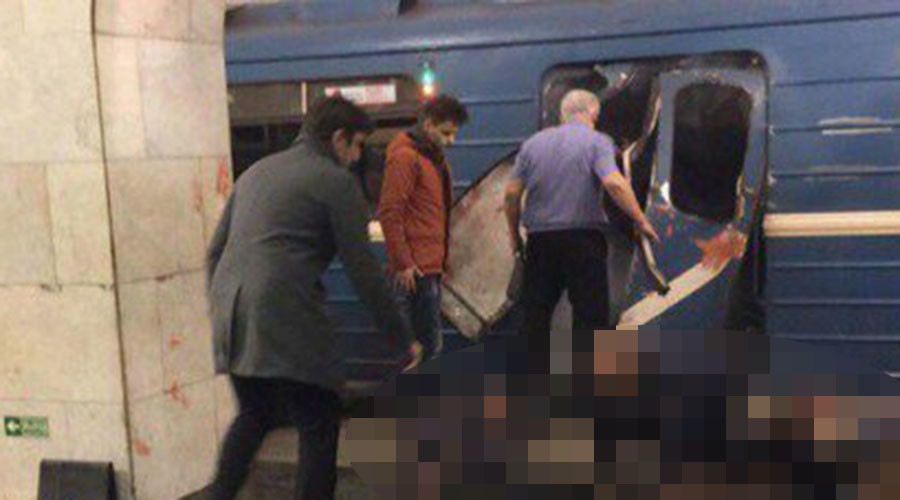






















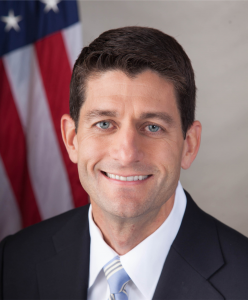

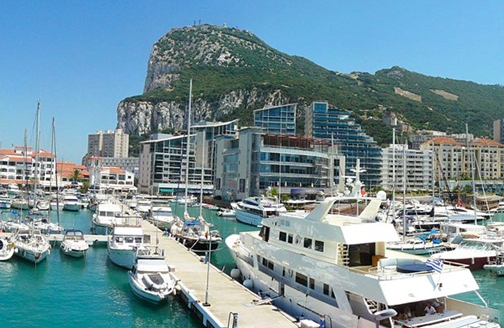



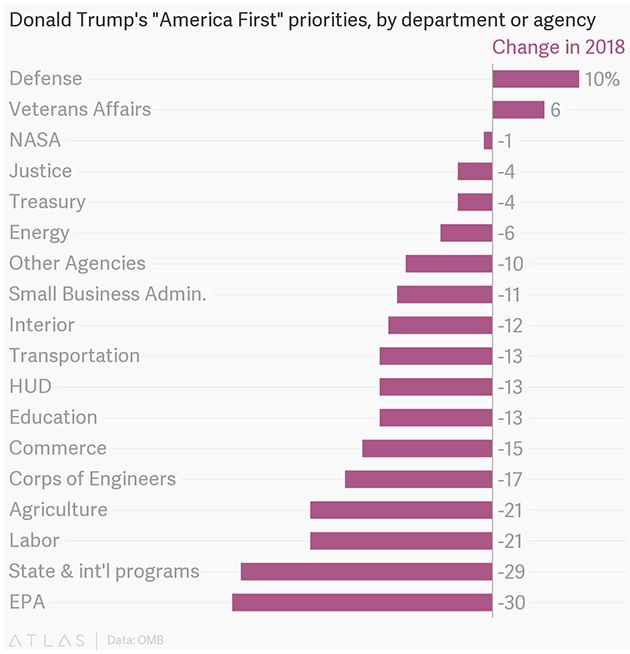


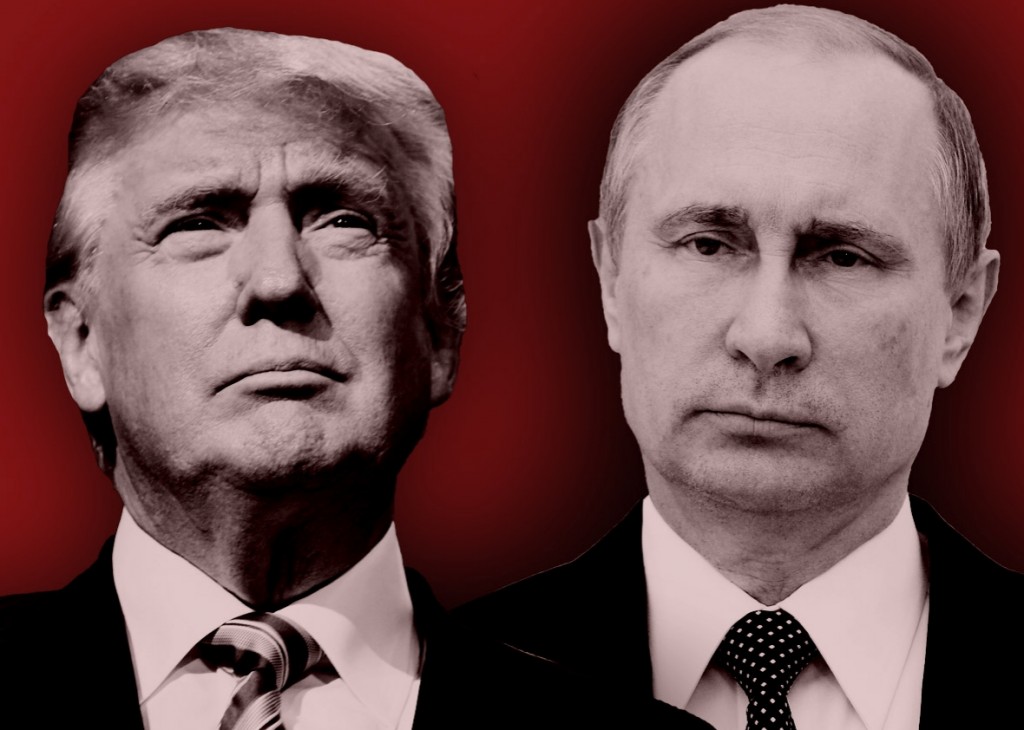

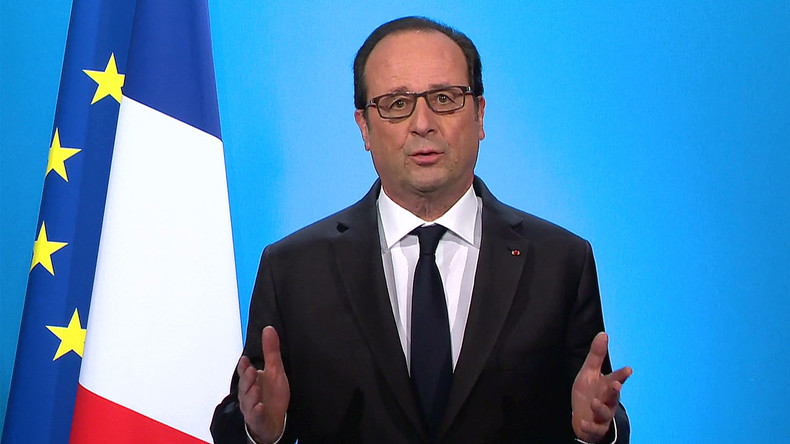
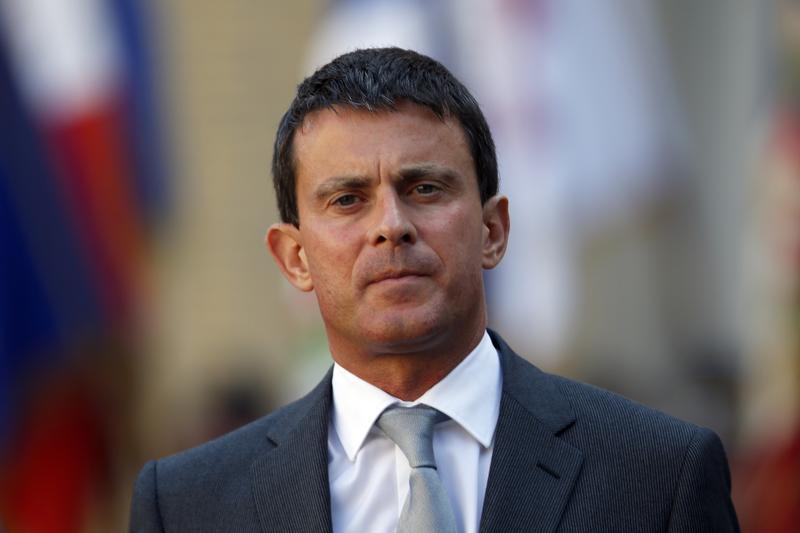
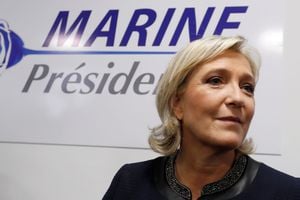

 In connecting these two major port cities together, Cameroon is considering Chinese help in
In connecting these two major port cities together, Cameroon is considering Chinese help in 
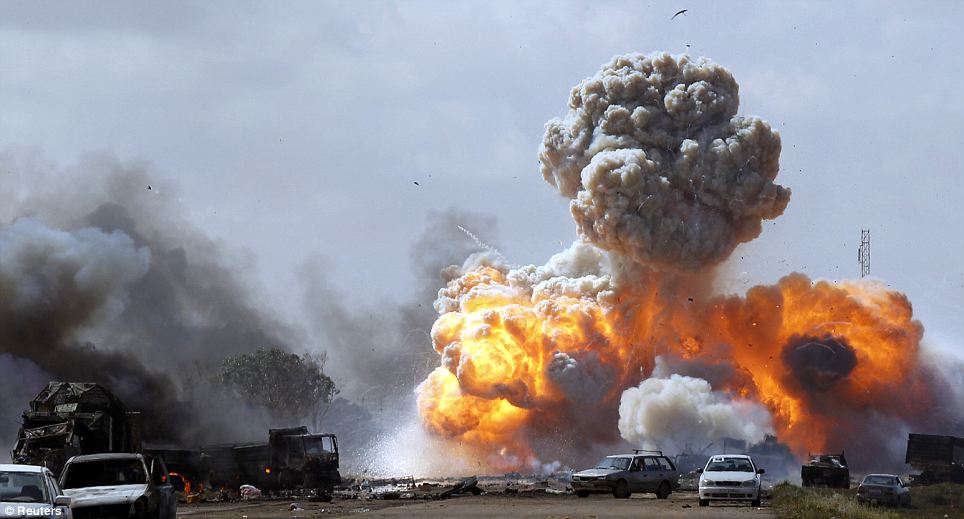




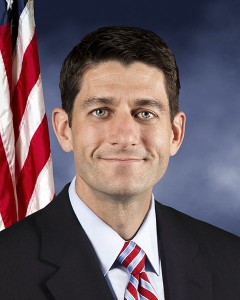

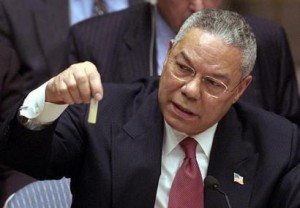
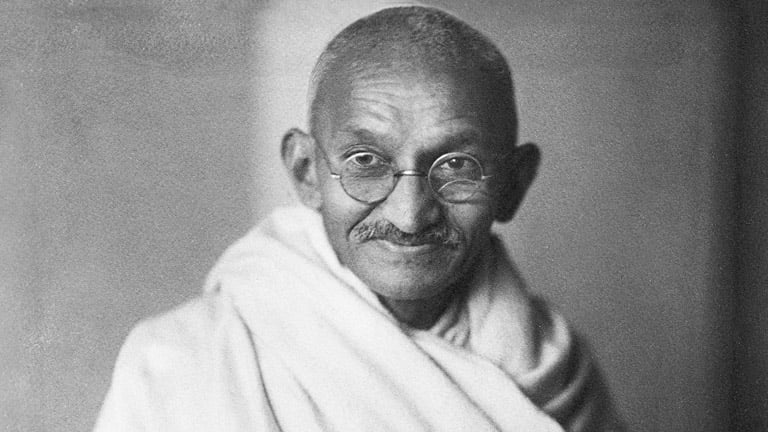

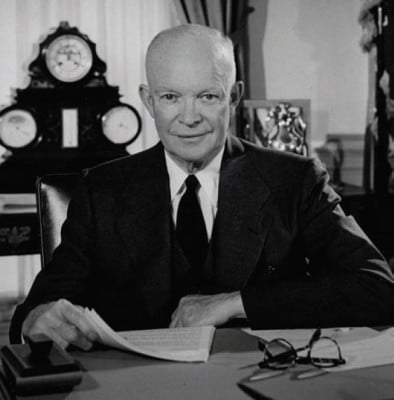


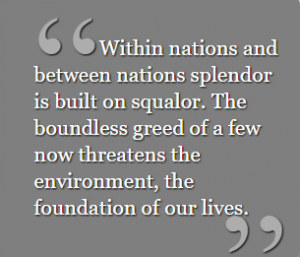
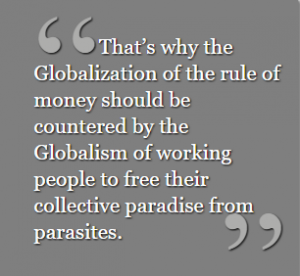
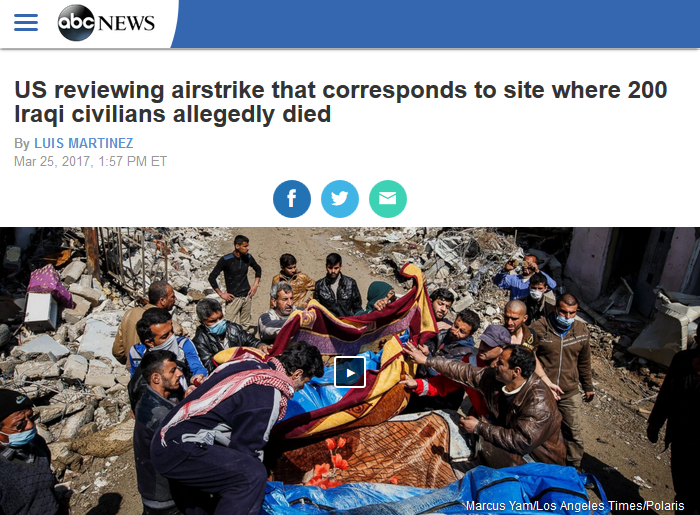
 The day before, however, the LA Times (
The day before, however, the LA Times (
 These tricks are employed even more frequently, and egregiously, in reports on atrocities committed by the US and its allies. And while media outlets invariably give the US the benefit of the doubt, Western enemies are not afforded the same luxury.
These tricks are employed even more frequently, and egregiously, in reports on atrocities committed by the US and its allies. And while media outlets invariably give the US the benefit of the doubt, Western enemies are not afforded the same luxury.
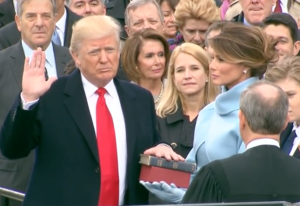


 Figures and tables, moreover, can only hint at the psychological and social violence suffered by combatants and noncombatants alike. It has been suggested, for instance, that one in six people in areas afflicted by war may suffer from mental disorder (as opposed to one in ten in normal times). Even where American military personnel are concerned, trauma did not become a serious focus of concern until 1980, seven years after the U.S. retreat from Vietnam, when post-traumatic stress disorder (PTSD) was officially recognized as a mental-health issue.
Figures and tables, moreover, can only hint at the psychological and social violence suffered by combatants and noncombatants alike. It has been suggested, for instance, that one in six people in areas afflicted by war may suffer from mental disorder (as opposed to one in ten in normal times). Even where American military personnel are concerned, trauma did not become a serious focus of concern until 1980, seven years after the U.S. retreat from Vietnam, when post-traumatic stress disorder (PTSD) was officially recognized as a mental-health issue.






























